The thesis about the "Russian city of Kyiv" continues to be heard periodically in the Russian media. However, by the end of February 2024, there is no concentration of forces and creation of strike groups for a new campaign on Kyiv.
Moreover, the beginning of the formation of such groups in Belarus or the Bryansk and Kursk regions of the Russian Federation will be immediately noticeable to intelligence .
The Russian army will not be able to achieve operational suddenness again, as in February 2022, when Russian assault convoys reached the suburbs of Kyiv in a few days. But at the same time, experts say, you need to prepare for everything.
So, can the Russian army try to capture Kyiv , and what factors may indicate preparations for this?
How the Russians attacked Kyiv in 2022
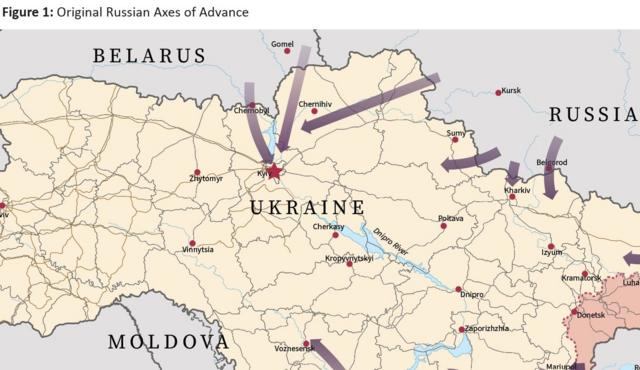
AUTHOR OF THE PHOTO, RUSI Caption for the photo, Directions of the offensive on Kyiv in February 2022
On February 24, 2022, the offensive of Russian battalion tactical groups (BTGs) from the north on Kyiv was one of the priorities of the invasion.
Columns moved from several directions at once: Glukhiv-Konotop-Nizhyn, Sumy-Pryluky, Trostyanets-Hadyach.
But the main Russian strike forces were the group that came from Belarus through the Chernobyl zone, as well as the group that advanced from the other side of the Dnieper - from Chernigov to Brovary.
A landing in Gostomel on the first day of the full-scale invasion and probably a similar landing at the airport in Vasylkiv was supposed to strengthen the advance on Kyiv, which the Russians failed to do.
In the analysis of the British Royal Institute of Defense and Security Research (RUSI), among the authors of which is also the ex-commander of the airborne assault troops of the Armed Forces of Ukraine Mykhailo Zabrodskyi, it is stated that "the northern axis was the main direction, the goal of which was the encirclement and capture of Kyiv."
"For this, the Russians formed two groups of troops, which were controlled from the command post of the Eastern Military District. One group was formed in the Gomel region of Belarus, it used the tactical sign "V" with the order to attack Kyiv along the right (western) bank of the Dnipro River. The second was formed in the Bryansk region of Russia, it had the tactical insignia "O" with the order to surround Kyiv from the left (eastern) bank," RUSI writes.
The authors add that the "Gomel" group was divided into units that were supposed to cut the routes connecting Kyiv from the west (such as the "Zhytomyr" and "Warsaw" routes), and parts that were supposed to enter the Ukrainian capital directly.
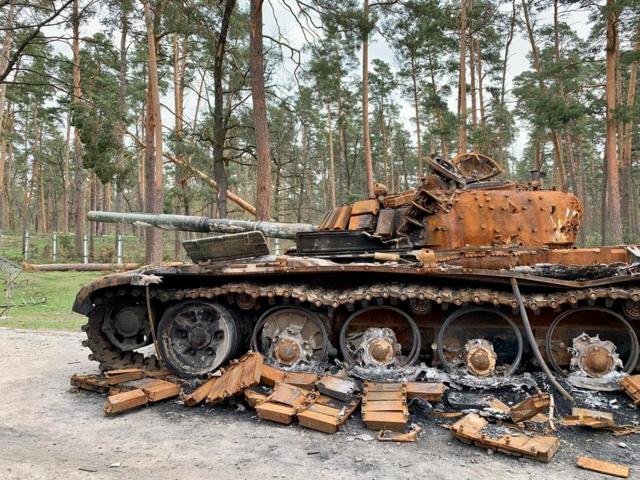
The number of both main groups is estimated at about 40 battalion tactical groups, or 25-35 thousand fighters.
Such uncertainty in the numbers can be explained by the fact that the Russian BTGry had a different number of fighters (from 400 to 800) and was equipped with different equipment and weapons.
RUSI, referring to the "synchronization matrix of the 1st Panzer Army captured near Kyiv in March 2022", claims that the Russians expected to complete all their main combat tasks within ten days of the invasion, after which it remained to clear out some remnants of the Armed Forces and "nationalist units ".
And the full annexation of Ukraine should be completed by August 2022.
Calculations about "ten days" do not look so fantastic, if you take into account that in the south of Ukraine, the Russian army actually managed to capture the land corridor to Crimea and surround Mariupol in a week.
However, all the plans of the Russians from the first attack on Kyiv were thwarted by the Armed Forces - the actions of maneuverable infantry units, the effective work of reconnaissance and artillery, as well as the fact that the Ukrainian air defense was able to withstand and restore coordinated work after the first days of the great invasion.
"Unsuccessful attempts to attack Kyiv, in which enemy troops were systematically destroyed in all directions, continued until March 19, when units of the Armed Forces of the Russian Federation went on the defensive and began to dig in. Subsequently, as a result of the counteroffensive of the Armed Forces of Ukraine, the remnants of Russian units left the territory of Kyiv Oblast by the beginning of April," says an analytical report from the General Staff of the Armed Forces of Ukraine, which was obtained by BBC News Ukraine.
A new offensive
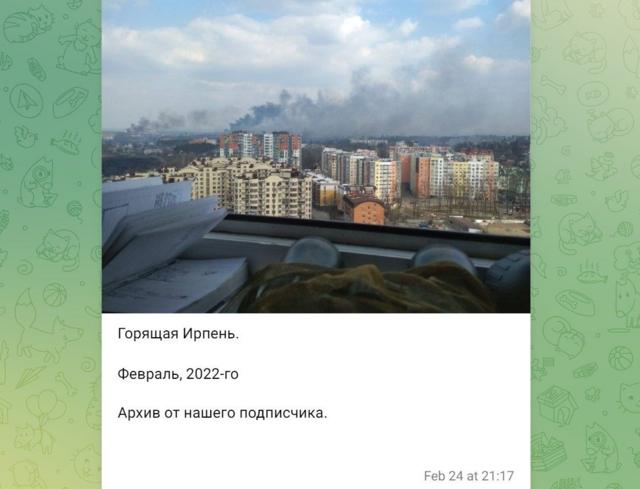
PHOTO AUTHOR, TELEGRAM Photo caption, Fresh post in one of the Russian publics for the anniversary of the beginning of the invasion. It was through Irpin that the Russians tried to break through to Kyiv. There is a spelling mistake in the post, because the word "Irpin" for the city is masculine and the locals have known it since childhood
The ambition to "capture Kyiv" is periodically spoken about by both Russian "warlords" and politicians of various levels.
In his interview, the deputy head of the Russian Security Council, Dmytro Medvedev, shared his thoughts on where Russia should "stop".
"Probably, it should also be Kyiv. If not now, then after some time. For two reasons. Kyiv is a Russian city. And from there is a threat to the existence of the Russian Federation," said the former Prime Minister and President of Russia.
But the real preparation of the Russians for the "campaign on Kyiv" is currently not visible, the military claims.
In January, Serhii Nayev, the former commander of the operational-strategic group of the Armed Forces of Ukraine "North" wrote that in the area of his responsibility (and this, in particular, Kyiv region), "the accumulation of enemy forces is not noticed."
At the same time, according to his information, near the north of Ukraine, the Russians maintain a group of about 20,000 soldiers. Belarusians have concentrated up to 2,000 soldiers along the Ukrainian border.
Since then, there has been no official news about the increase in the number of Russian forces in the conditional "Kiev" direction.
Kyrylo Budanov, Head of the Ministry of Education and Culture of the Ministry of Education, at the recent forum "Ukraine. The year 2024" also denied the information about the plans for a repeated attempt to advance the Russian army from the north: "They have been scaring for two years: now they will come from here and there... I am already tired of answering everyone. It does not".
However, all the military observers interviewed by BBC News Ukraine admit that a new attack on Kyiv is still possible.
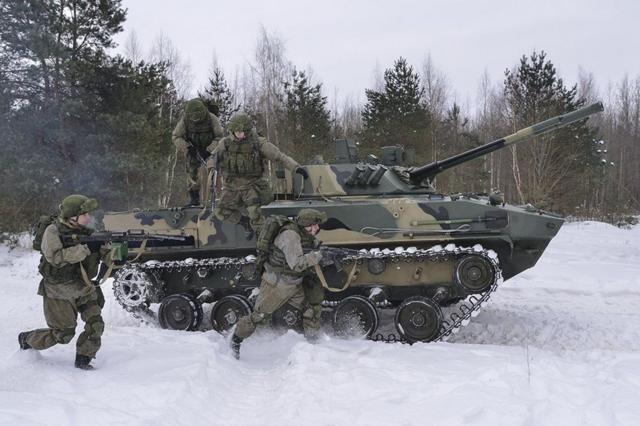
PHOTO AUTHOR, MINISTRY OF DEFENSE OF THE RUSSIA
"You have to be ready for this, because it's a war. At any moment, they can start some kind of movement," says Roman Pohorily, co-founder and analyst of the DeepState group.
"They can attack from the Chernihiv region. Maybe through Sumy to Pryluky. Maybe from the East. Maybe from the South along the Dnieper. But from Belarus is the shortest way", - notes the coordinator of another monitoring group "Information Resistance" Kostyantyn Mashovets.
At the same time, he adds that now there are no signs that the Russians are ready to "carry out deep operations in the direction of Kyiv."
And the chairman of the board of the "Return Alive" foundation, Taras Chmut, said on the air of the "Frontova Poplava" podcast that the threat of a repeated attack on Kyiv has increased in recent months.
"Is there such a threat? Yes. Is it bigger now than six months ago? Probably so. Is there a growing trend towards this? Probably so. Do they understand this trend in Ukraine? Probably so. Are they preparing? Yes," he explained.
"For sure, someone will attack someone this year, because the war cannot go any other way. Someone always has a strategic initiative and tries to implement it. And there is always a second side that goes into strategic defense to wear down the enemy's advancing forces, seize the strategic initiative and go on the counter-offensive. This is the "base" of the war," said Taras Chmut.
And he added that "the year will be difficult."
Signs of preparation

PHOTO AUTHOR, MINISTRY OF DEFENSE OF THE RUSSIA
There is a set of quite clear signals that will indicate the preparation of a new attack on Kyiv from Belarus or the regions of Russia closest to Kyiv.
In fact, these indicators were also present in February 2022, however, at that time they were considered partly as elements of political pressure from Moscow.
"When the process of deployment of the Russians begins, we will see it. The military has signs of operational deployment of the troop grouping: transport communications are operating in a certain mode, there are signs on the ground, there is preparation of hospitals and other elements," says Kostyantyn Mashovets.
According to various estimates, such a deployment can be seen at least a month before actual actions, and possibly even earlier - the movement of large groups of troops cannot be hidden in the conditions of satellite reconnaissance.
At the same time, the Russian command may resort to simulating an attack on Kyiv in order to draw forces from other directions.
"The opponent can engage in operational play and mislead. With a real concentration of a certain number of troops," warns Kostyantyn Mashovets.
"You have to prepare for any options. In Avdiivka, the Russians actually crawled through the collector's pipe," Roman Pohorily adds.
At the same time, a real attack on Kyiv will definitely differ from the actions of subversive groups, which in fact constantly take place in the north of Ukraine, but do not always get into the information summaries.
It can only be a combined military operation with the participation of tens of thousands of Russian troops. Therefore, one of the main indicators of a new attack on Kyiv may be a new wave of open (and not hidden, as now) mobilization in the Russian Federation.
"The problem is what tasks the Russian military-political leadership will set. If they have the task of keeping under control the territories they currently have and creating pressure on Ukrainian positions, then this group is enough for them. There is no point in announcing any large-scale open mobilization," explained the analyst of the "Return Alive" fund Mykola Beleskov in an interview with the "Military" channel.
"If no mobilization is announced after the so-called "elections of the President of Russia", it means that Russia has chosen just such a strategy (maintenance of captured territories. - Ed .). If they announce it, it means that they are preparing, maybe they will try something in one or two additional areas. The most likely potential direction, which is called, is the junction of Sumy Oblast and Kharkiv Oblast. But so far we do not see any signs of this," he added.
The presidential elections of the Russian Federation will be held on March 15-17.
Recruit of the "Freedom of Russia" legion and former lawyer Oleksiy Baranovsky in a conversation with BBC News Ukraine admits the option of a new wave of mobilization of Russians.
"The logic is simple: after the March "electoral procedure", which the Kremlin actually turns into a referendum on support for the war, Putin's hands will be finally untied. And not only in relation to Ukraine, but also to its own population. Like, 80% said "yes" to Putin - now Putin is giving you the command to attack."
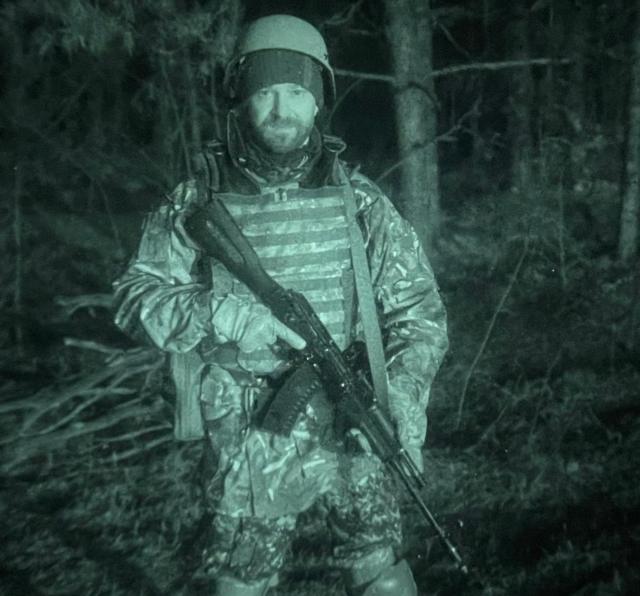
PHOTO AUTHOR, OLEKSII BARANOVSKY Photo caption, Russian volunteer Oleksii Baranovsky allows a new wave of mobilization of Russians
"Putin may believe that his army has reloaded enough to repeat the march on Kyiv in three days. The result will be the same, and even more catastrophic for the Kremlin. The Ukrainian defense forces are ready to repulse a new attack on Kyiv, and the "Freedom of Russia" legion will take part in the defense within the framework of the assigned tasks," the Russian volunteer adds.
Conclusion: Kyiv must be ready
To re-offend Kyiv, the Russians will need to concentrate tens of thousands of soldiers and equipment.
And taking into account the fortifications and other elements of the preparation of the Ukrainian army in the north, this means the need for a much larger group.
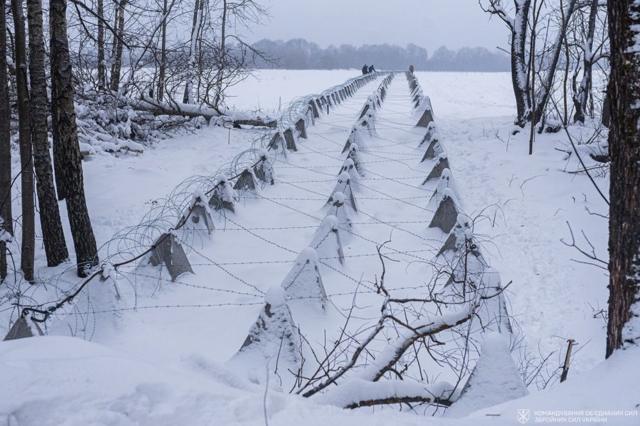
PHOTO AUTHOR, COMMAND OF THE UNITED FORCES OF THE ZSU / SERHIY NAEV
"At the initial stage, 30,000 to 35,000 men, including reserves, advanced. But now they will not have strategic and operational suddenness. So, the grouping should clearly be larger," says Kostyantyn Mashovets.
Probably, the Russians will now have to gather much more forces in the "Kiev direction", up to 100-120 thousand.
In the same way, without "operational suddenness" it is hardly possible for the rapid advance of Russian convoys on BMD and BMP deep into Kyiv region for dozens of kilometers per day, as well as a new landing on airfields, as was the case in Gostomel.
But this does not cancel the general threat to Kyiv.
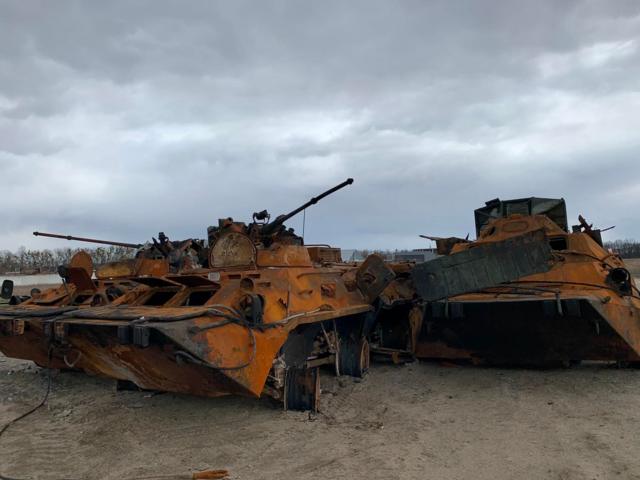
"The topic can become actualized any day," Taras Chmut emphasized on the aforementioned "Poplavy" broadcast.
The potential destinations of a new major offensive may not be Kyiv, but another city or facility – Kharkiv, Khmelnytskyi or Rivne NPP (the RUSI study mentions the expectation of the occupation of these nuclear plants by Belarusian forces at the beginning of the major invasion).
"No one expects anything other than a new wave of mobilization and military escalation from Putin's spring of 2024. But it is also important for Russians to understand that the war will affect everyone and that they will not be able to sit out, and the queues at the conditional Georgian border for those who do not want to fight for Putin's ambitions as part of the army of occupation may be even longer this time," concludes Oleksiy Baranovskyi.

